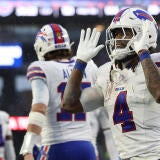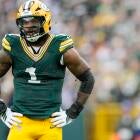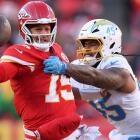
How did the Packers leapfrog the Lions as NFC heavyweights overnight? Exploring Green Bay's hot start
One week in, the Packers, not the Lions, look like the class of the North
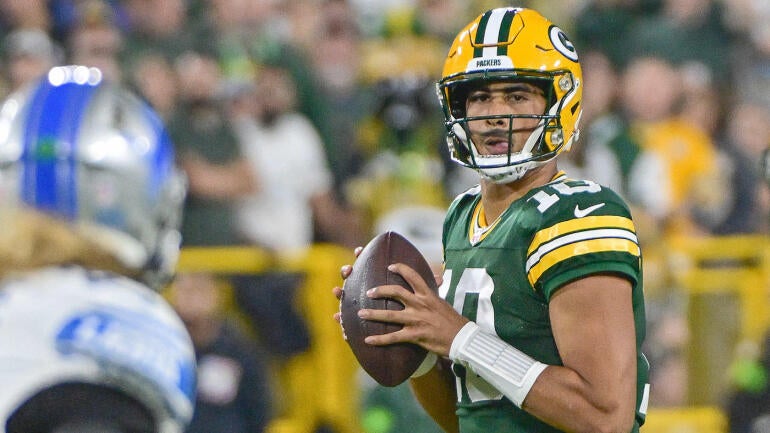
One week does not make or break an NFL season. But it can tell us a lot about what's to come.
So when the Green Bay Packers trounced the Detroit Lions at Lambeau Field on Sunday, it wasn't just another close game between bitter rivals. (In fact, it wasn't close at all, with Green Bay once holding a 24-6 lead in the fourth quarter.) It was also a transfer of power: The Packers, not the Lions, are now firmly entrenched as favorites atop the vaunted NFC North. Green Bay, not Detroit, is widely considered the superior heavyweight in the NFC.
But how did this happen overnight? It was just eight months ago that the Lions held the No. 1 playoff seed in the conference. Everyone assumed the road to Super Bowl LIX would run through Motor City. Surely one premature exit from the postseason at the hands of the Washington Commanders didn't sour everyone on the all-star Lions. And didn't the Packers just show us in 2024 they were equally, if not more fragile when matched up with true contenders? Remember, Green Bay's last playoff bid was overshadowed by an inability to beat the best of the best, with the Packers finishing 0-6 against clubs that had records at least four games above .500.
What changed? Why were the Packers so clearly the better team in Sunday's 2025 opener? And more importantly, why is everyone convinced Week 1 wasn't a fluke, but rather validation of Green Bay's immense preseason hype?
Firstly, the Lions are in the midst of an identity crisis. That's not to say coach Dan Campbell is lacking his trademark zeal. Just this week he all but guaranteed Detroit will beat the Chicago Bears in Week 2 because "we have to." The Lions are still a treasure trove of playmakers with a smashmouth leader. That hasn't changed. But with new coordinators on both sides of the ball, it's hard to avoid hiccups of transition.
That was incredibly apparent in Week 1, when Detroit averaged a measly 3.8 yards per offensive play. Yes, Micah Parsons added big-name gloss to the Packers' front, but still, we're talking about basement-dweller production here: That mark ranked 29th among 32 teams, better only than that of the annually sluggish Cincinnati Bengals and the rebuilding New York Giants and Tennessee Titans.
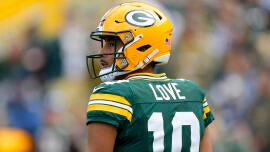
How does that happen when you employ Jahmyr Gibbs, Amon-Ra St. Brown, Sam LaPorta, Penei Sewell, etc.? Because the point guard at the controls, Jared Goff, never got comfortable behind a line missing retired center Frank Ragnow and without the sideline scheming of Ben Johnson. Notorious for quick-strike accuracy under Johnson, Goff posted the third-highest average time to throw (3.09 seconds) among Week 1 quarterbacks. It speaks at least partially to a distrust of whatever was unfolding in front of him.
There's little doubt the Lions have the skill-position firepower to reverse course. But you can have all the shiny toys in the world; if you don't have sturdy protection and trustworthy pre- and post-snap structure, well, you're going to end up with six points halfway through the fourth quarter. And you're certainly not going to scare other teams into thinking you're the class of the division, let alone the conference. This may be too extreme a reaction to one game, but remember Goff's more skittish tendencies were also at play in Detroit's 2024 playoff exit, when the otherwise resilient signal-caller had four turnovers to essentially gift the Commanders a postseason upset.
But here's the real kicker: Even if the Lions return to form, the Packers are now a more complete package.
You can start under center, where Jordan Love opened 2025 with some of the most confident downfield passing of his still-young career. Love hasn't always equaled Goff in week-to-week accuracy, but he's got one of the most gifted arms in the NFL, as evidenced by effortless bombs launched against Detroit. Despite logging the eighth-highest deep-throw rate (13.6%) and 10th-highest tight-window throw rate (18.2%), Love still hit 72.7% of his passes in Week 1. In other words, even on the highest-magnitude throws, he was sharp as could be. And he's proven capable of MVP-level heights before; durability, not lack of splashy strikes, has been the biggest holdup.
Love is just the face of the attack, however. He now has a deeper receiving corps that can better withstand inevitable bumps and bruises, with Jayden Reed, Romeo Doubs, Tucker Kraft and rookie Matthew Golden all capable of stretching the field. And that's not including Christian Watson, who's due to return later. His ground game is still buoyed by a workhorse in Josh Jacobs. And Parsons, who's only beginning to integrate into the pass rush, merely adds a premium force to an ascending front seven that saw vets like Edgerrin Cooper, Rashan Gary and Quay Walker combine for 28 tackles, three tackles for loss and 1.5 sacks in Week 1 alone.
Coach Matt LaFleur doesn't get enough credit for guiding the Packers to five playoff appearances in his six seasons atop the staff, successfully bridging the gap between the Aaron Rodgers era and the Love takeover. It's no surprise, now outfitted with maybe the most balanced and promisingly youthful lineup of his entire tenure, that LaFleur's squad got off to such a strong start in 2025. And it's no surprise everyone has been quick to hop on the green and gold bandwagon. You're talking about the perfect blend of proven results and added upside.
Could all of this change in a heartbeat? Oh absolutely. The NFL is a week-to-week animal, forever capable of rocking the standings with unforeseen breakouts, promotions and injuries. But if Week 1 was any indication, then the offseason expectations surrounding both Detroit and Green Bay appear to be coming to fruition. The Lions, though long adored for their bold rise from the ashes, may finally be hitting a wall. And the Packers, though long dinged up in their quest to reach Rodgers-era glory, may finally be hitting their stride.


